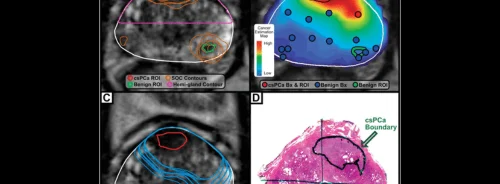HealthManagement, Volume 6 - Issue 4, 2006
Making a More Accurate Diagnosis
Author
Dr. Ivan Salgo
Heart Failure
Investigations
Programme Director
Philips Ultrasound
Advances in ultrasound technology are making it possible for physicians to obtain clearer images of the heart than ever before, which is critical in being able to accurately diagnose and provide appropriate treatment for young cardiac patients with congenital heart defects. From a business perspective, real-time three-dimensional imaging of the heart is enabling hospitals and clinics to improve workflow through faster exam times and improve their patient management and satisfaction.
In the field of paediatric cardiology, recent advances in echocardiography have improved numerous aspects of care ranging from prenatal detection of heart defects to surgical planning. Using STIC technology and Live 3D Echo, images can be rotated and cropped to view the beating heart from all angles. As a result, physicians are able to obtain a complete view from multiple perspectives, providing immediate and improved perspective on spatial relationships. The full volume datasets obtained from Live 3D Echo technology also facilitate more accurate quantification of heart function and ejection fraction; a key indicator of heart health. These tools assist the physician in making a more accurate diagnosis of the young patient – and give surgeons an advantage in pre-surgical planning.
Prenatal Evaluation of the Foetal Heart Using
STIC
An emerging technology with great potential for improving the detection rates of congenital heart disease is STIC, or four-dimensional ultrasonography with spatiotemporal image correlation (STIC).
In the U.S., guidelines for performance of foetal cardiac examination by the American Institute of Ultrasound in Medicine (AIUM) recommends extending the examination beyond the fourchamber view to include the outflow tracts of the foetal heart whenever technically feasible. However, evaluation of the outflow tracts is the most difficult part of the extended examination of the foetal heart.
“Visualisation of the right and left outflow tracts is crucial for the diagnosis of cardiac anomalies that affect the aorta and pulmonary arteries, and for which morbidity and mortality can be improved by accurate prenatal diagnosis,” said Dr. Luís F. Gonçalves, Assistant Professor of Obstetrics and Gynaecology, Wayne State University, Perinatology Research Branch NICHD/NIH/DHHS, Hutzel Women's Hospital, Detroit, Michigan.
Indeed, many sonographers have difficulty obtaining and interpreting these views. Reasons for this difficulty include lack of operator experience, foetal motion during the examination, or the small size of the foetal heart.
Diagnosing and Treating Congenital Heart
Defects
Live 3D Echo ultrasound has shown real value in diagnosing congenital heart defects and helping the paediatric cardiologist and surgeon plan lifesaving surgery following birth. With 3D, volume data can be archived and displayed in multiple planes as well as in rendered volumes, showing the motion of the cardiac chambers and allowing more accurate quantification of heart function. In addition, 3D Colour Flow allows the physician to better appreciate the blood flow through heart valves and septal defects.
Real-time three-dimensional imaging is proving to be instrumental in helping physicians better diagnose the exact nature of a condition and determine an appropriate course of action. Live 3D Echo is relevant to surgery or other interventions by providing the ability to obtain volumetric images of the heart, and to crop and slice those images real-time in a manner that was not possible before. By being able to view these images from relevant perspectives, surgeons now have the ability to prepare a precise surgical plan, minimising surprises. “All these clinical applications can be done in a controlled, standardised manner, allowing for assessment of heart anatomy and function more easily than with 2D,” said Dr. Girish Shirali, Director of Paediatric Echocardiography, Medical University of South Carolina.
Improving Care for Children
An additional benefit of Live 3D Echo is its rapid image acquisition time, which is advantageous in scanning young children who cannot sit or lie still for extended periods.
And, since full-volume images can be manipulated offline, additional scans are often not necessary. The quick acquisition time of Live 3D Echo also does not require sedation of children who might be anxious about imaging procedures or who are too young to hold themselves still.
“Exposing young children to ionising radiation is always a concern in medical imaging,” said Dr. Shirali. “By using ultrasound, this concern is eliminated, especially for patients that may require multiple exams as part of their diagnosis and course of treatment.”
Why is 3D Ultrasound so Important?
Congenital heart disease is a serious health problem. As the leading cause of death among congenital anomalies, the medical community should strive to improve the detection rate for these conditions. Tools such as 3D/4D ultrasound have the potential to decrease the dependency on operator skills, speed up the diagnostic process and improve diagnostic accuracy.
With time, it is likely that all ultrasound systems will have 3D/4D capabilities as a standard feature. Accordingly, learning to quickly and accurately extract the best diagnostic information is important for all physicians and clinicians as hospitals and clinics continue to improve patient care.





